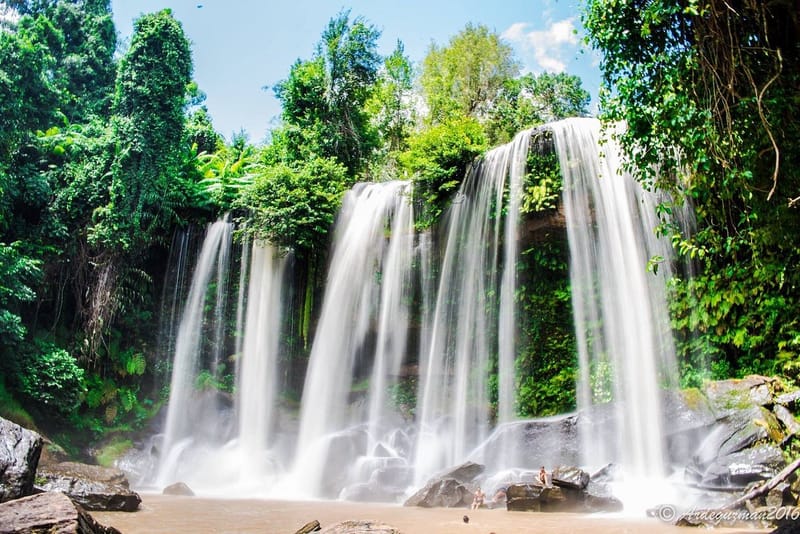Kulen mountain

Phnom Kulen, or "Mountain of Lychees," is a sacred site located about 50 kilometers north of Siem Reap, Cambodia. It holds immense cultural and historical significance as the birthplace of the Khmer Empire. In 802 CE, King Jayavarman II declared independence from Java here, marking the founding of the Khmer Empire, and this event is commemorated by the Preah Ang Thom temple, which houses the largest reclining Buddha in Cambodia. The mountain, known in ancient times as Mahendraparvata, also served as the early capital of the Khmer Empire.
The area is now protected as Phnom Kulen National Park, which spans over 37,000 hectares and is rich in both biodiversity and natural beauty. The park is home to stunning waterfalls, including a 4–5 meter high waterfall and a larger one reaching up to 20 meters, offering visitors a chance to swim and enjoy the surroundings. Another major attraction is Kbal Spean, or the "River of a Thousand Lingas," where visitors can see carvings of Hindu deities and symbols along the riverbed, dating back to the Angkorian period. The Preah Ang Thom temple remains an important pilgrimage site for Cambodians.
Phnom Kulen is not only a place of natural beauty but also a destination that offers a deep connection to Cambodia’s ancient history and culture. With its waterfalls, sacred temples, and archaeological significance, it is a must-visit for those interested in exploring Cambodia’s heritage and enjoying its serene landscapes. The site is accessible by a 1.5-hour drive from Siem Reap, and the cooler months from November to February are the best time to visit.